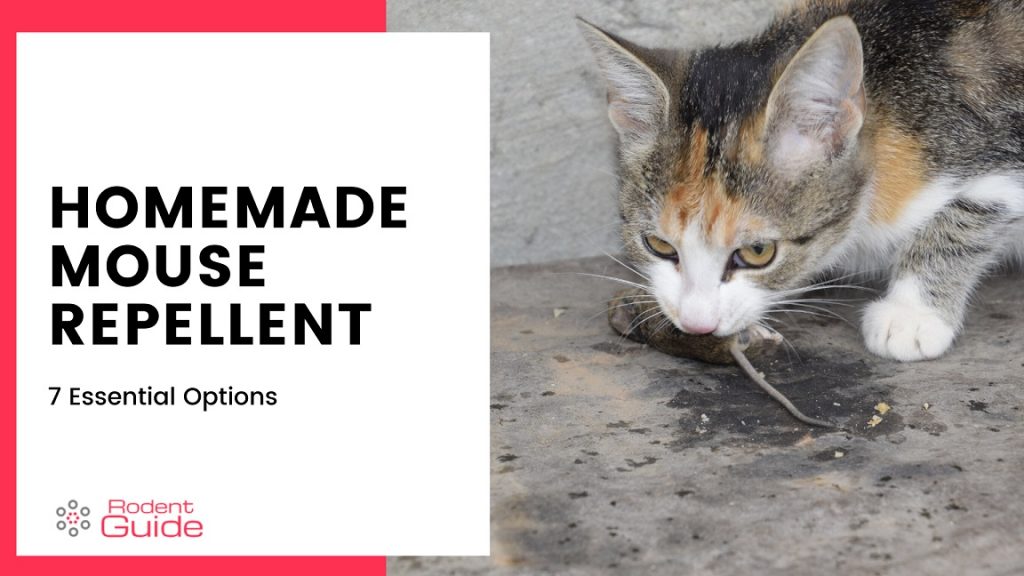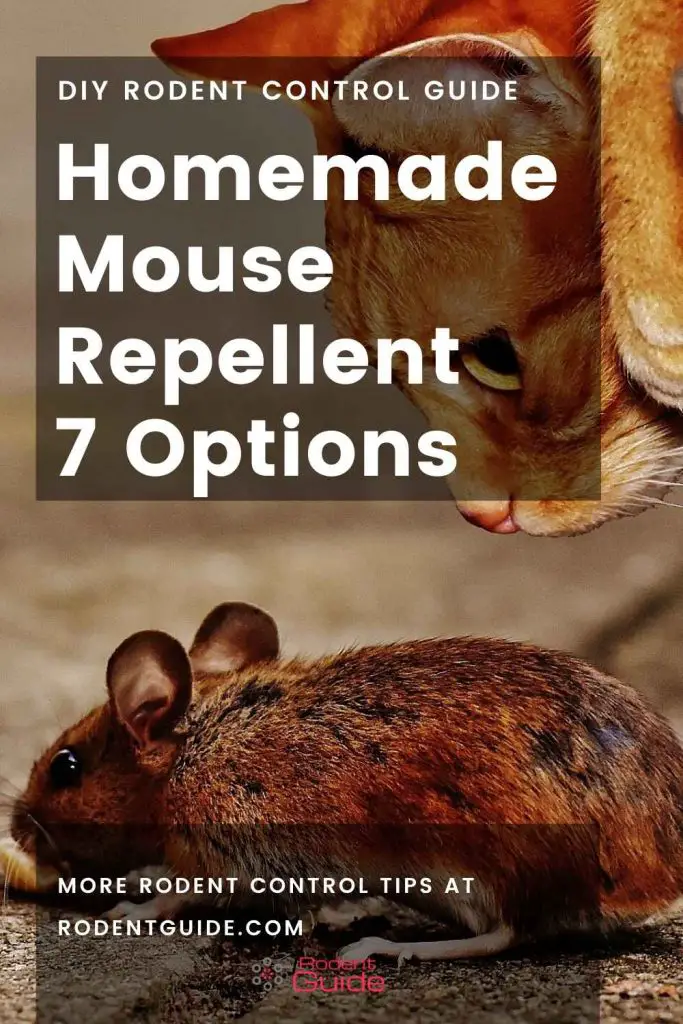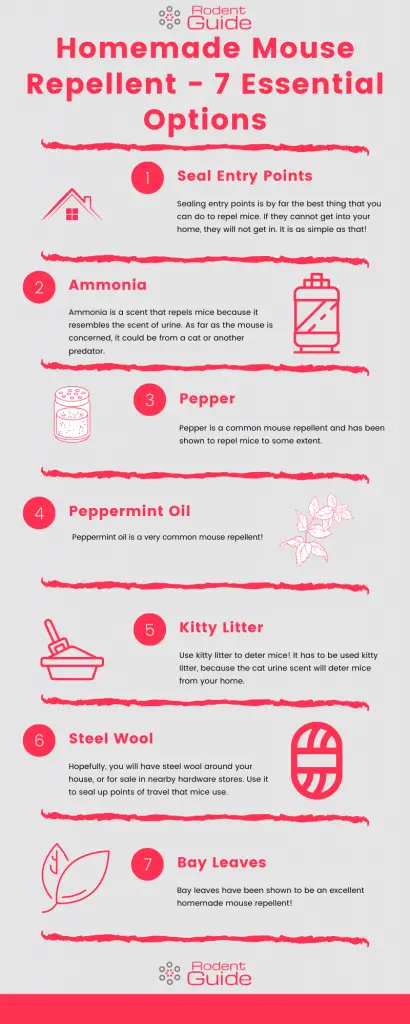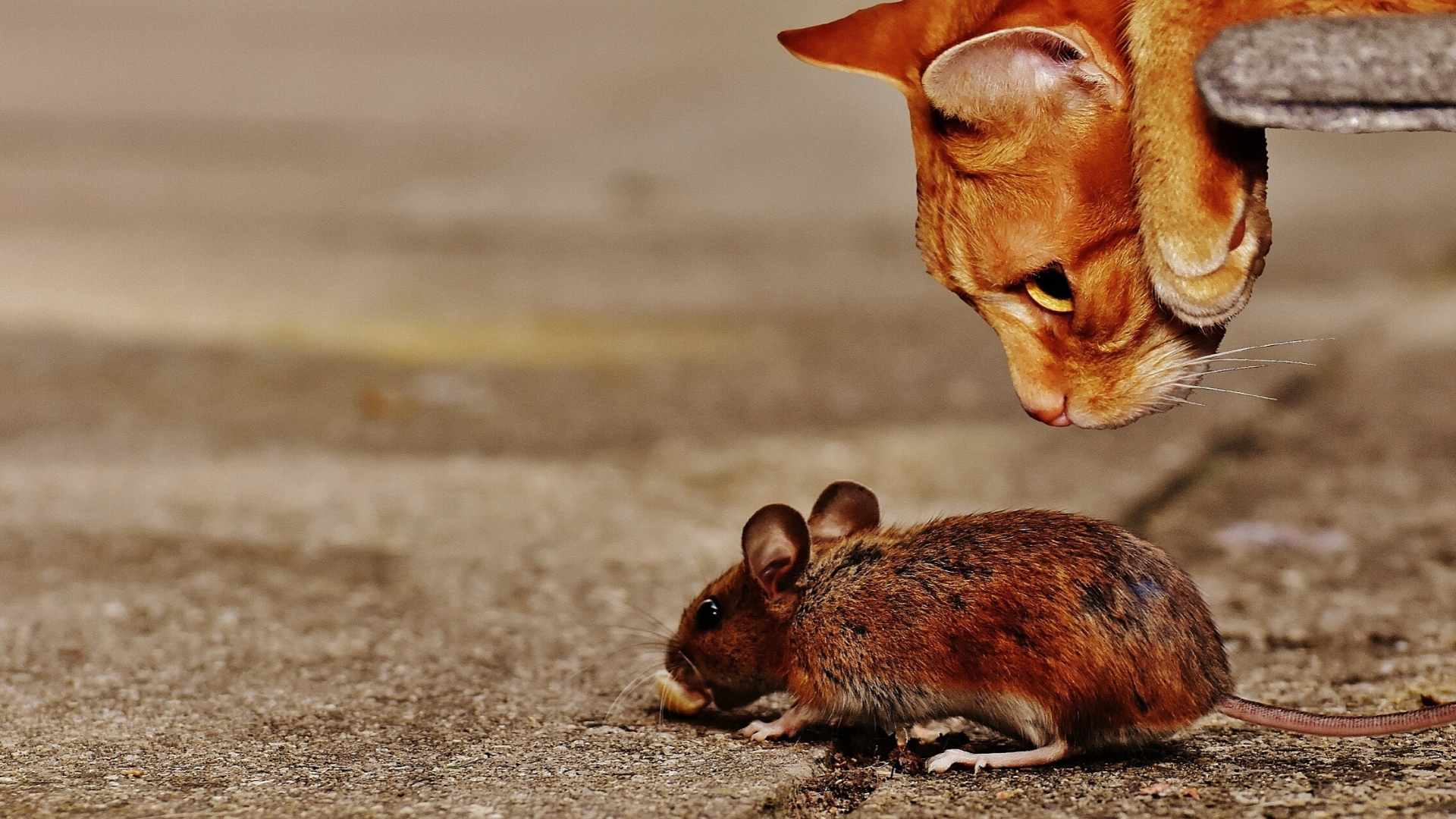So many options are available to you if you want to get rid of mice. Sometimes, it can be a little overwhelming and potentially expensive too! However, it is worth knowing that there are some homemade options that you can use. This post will look at some of the best homemade mouse repellent options.
Before we begin (spoiler alert), the first option is to seal the entry points! I cannot emphasize enough that if a mouse cannot get into your home, you do not have a mouse problem.
What you will learn:
- Do homemade mouse repellents work?
- How do you use repellents to deter the mice?
- 7 excellent homemade mouse repellent options.

Do Homemade Mouse Repellents Work?
Yes, they do. Remember that these DIY mouse repellent options work very well in confined spaces but not so well if you are trying to repel mice in a large area.
This is because the scents dissipate in large areas. Therefore, it is best to apply these repellents in confined spaces.

Homemade Mouse Repellent Details
Here are the 7 best homemade mouse repellent options.

Seal Entry Points
Sealing entry points is the best thing you can do to repel mice. If they cannot get into your home, they will not get in. It is as simple as that!
I recommend that you read up on common mouse entry points. Fill these in with caulk where possible. Other options to seal these up include steel wool (see below).
Items You Need
You need caulk and possibly a ladder to reach those high entry points, Yup; you have to deal with those too!
Instructions
Find any mouse entry points, and fill them up to remove the chances of a mouse getting into your home.
Ammonia
Ammonia is a scent that repels mice because it resembles the scent of urine. As far as the mouse is concerned, it could be from a cat or another predator.
As you may already know, having a cat does keep the mice away! Use that to your advantage, even if you do not have a cat.
Items You Need
Ammonia.
Instructions
Spray ammonia in areas where you have noticed mouse activity.
Be very careful about using ammonia! It can cause skin burns if it is not used correctly. Always follow the instructions on the label.
I’ve written a guide on how to get rid of mice with kitty litter, which has a very similar use, so check that out.
Pepper
Pepper is a common mouse repellent and has been shown to repel mice somewhat. I say that because it hasn’t worked all the time I have tested it.
You will probably already have the ingredients at home in terms of being a mouse repellent, so it is worth a shot!
Items You Need
Black pepper or cayenne pepper.
Instructions
Scatter pepper in areas where you have noticed mouse activity. Reapply if the pepper is removed. Do not use outside for obvious reasons!
Peppermint Oil
Peppermint oil is a very common mouse repellent!
To use this effectively, you need to use them in confined areas (the same as everything on this page).
Mice do not like peppermint oil, but it will not repel the mice if the scent is not strong enough.
Items You Need
Peppermint oil and cotton balls. This is my preferred method of using peppermint oil as a mouse deterrent.
There are more ways you can use peppermint oil to deter mice, though.
Instructions
Soak the cotton balls in peppermint oil and place them in areas where you have noticed mouse activity. Again, using this in confined spaces such as cavity walls and your attic would be best.
You could also combine peppermint oil with water to make your natural mouse repellent spray!
Kitty Litter
I have written about how you can use kitty litter as a mouse repellent, which works!
It works because a cat should use the kitty litter, and cats are natural predators of mice, so they will avoid areas where they sense a cat.
Items You Need
A cat and kitty litter. If you haven’t got these items, take some kitty litter around a friend’s house if they have a cat. Ask your friend if you can put this down for their cat to urinate on.
Sure, it will be a bizarre conversation, but if you explain why, I am sure you will not lose a friend over it!
Instructions
Place the kitty litter in bowls where you have noticed mouse activity. An excellent way to make your mouse repellent!
Steel Wool
Hopefully, you will have steel wool around your house or for sale in nearby hardware stores.
Mice can chew many items but do not like chewing steel wool. Use this to seal entry points or holes that mice use to travel through your home.
Recommended reading: Using steel wool for mouse control.
Items You Need
Steel wool.
Instructions
Place steel wool in holes to stop mice from traveling through your home. You can also use it to seal any entry points that mice use to enter your home.
OK, so it is not exactly a DIY mouse repellent; however, it does work! Mice hate chewing through it, and it is very cheap.
Bay Leaves
Bay leaves are an excellent homemade mouse repellent!
Items You Need
Bay leaves.
Instructions
Scatter bay leaves in areas where you have either heard or seen mice or mouse droppings/urine.
What is a natural mouse repellent?
Peppermint oil is an excellent natural mouse repellent. It doesn’t work well in large areas, but if you soak cotton balls in peppermint oil and place them in confined spaces, it will work as a natural mouse repellent. Used kitty litter can also be repurposed as a natural mouse repellent!
What scent will keep mice away?
The following scents are excellent at repelling mice, as long as they are used correctly: Bleach, peppermint oil, used kitty litter, bay leaves, and pepper.
Will vinegar repel mice?
Vinegar also works well to repel mice. White vinegar has been successful for me in the past. With any homemade mouse repellent option, you need to use it correctly. Use them in confined areas, not in large areas. The scent will be weak if you try to use them in large areas.
Conclusion
I have given you 7 of the best homemade mouse repellent options in this post! The beauty is that you can use as many as you need to.
It is vital that you use these correctly, because if you don’t use them correctly then you will only be wasting your time and money… that is 2 items you will not get back, right?
Do not rush into anything! Instead, consider your situation, and formulate a complete mouse control plan. The best thing you can do is seal all the entry points a mouse will use to gain entry into your home. If mice cannot get into your home, you do not have a mouse problem!
Once you have sealed your home from mice invasion, you should not need to use any DIY mouse repellent options… but it is best to have them on standby, just in case!
Good luck!








